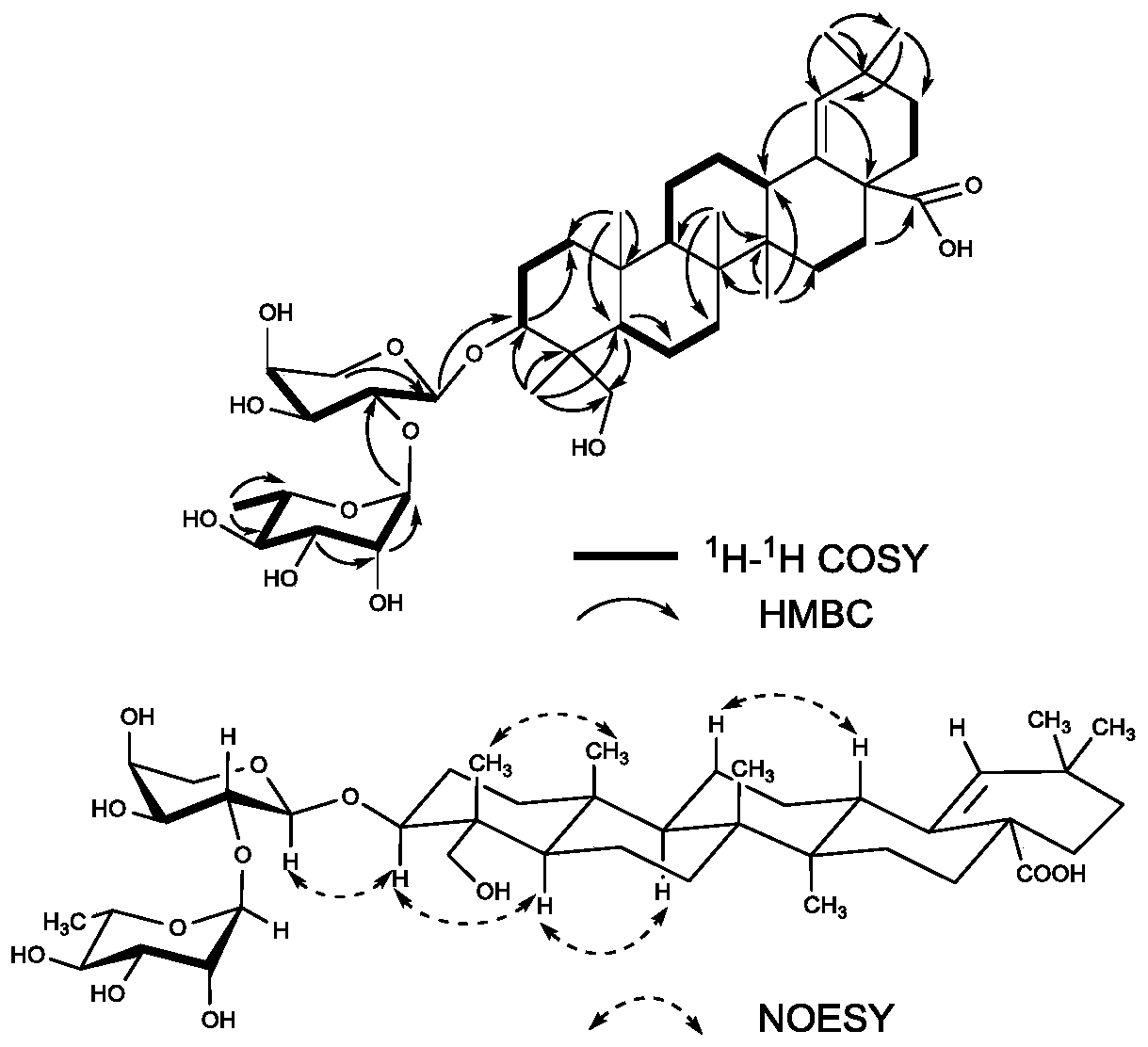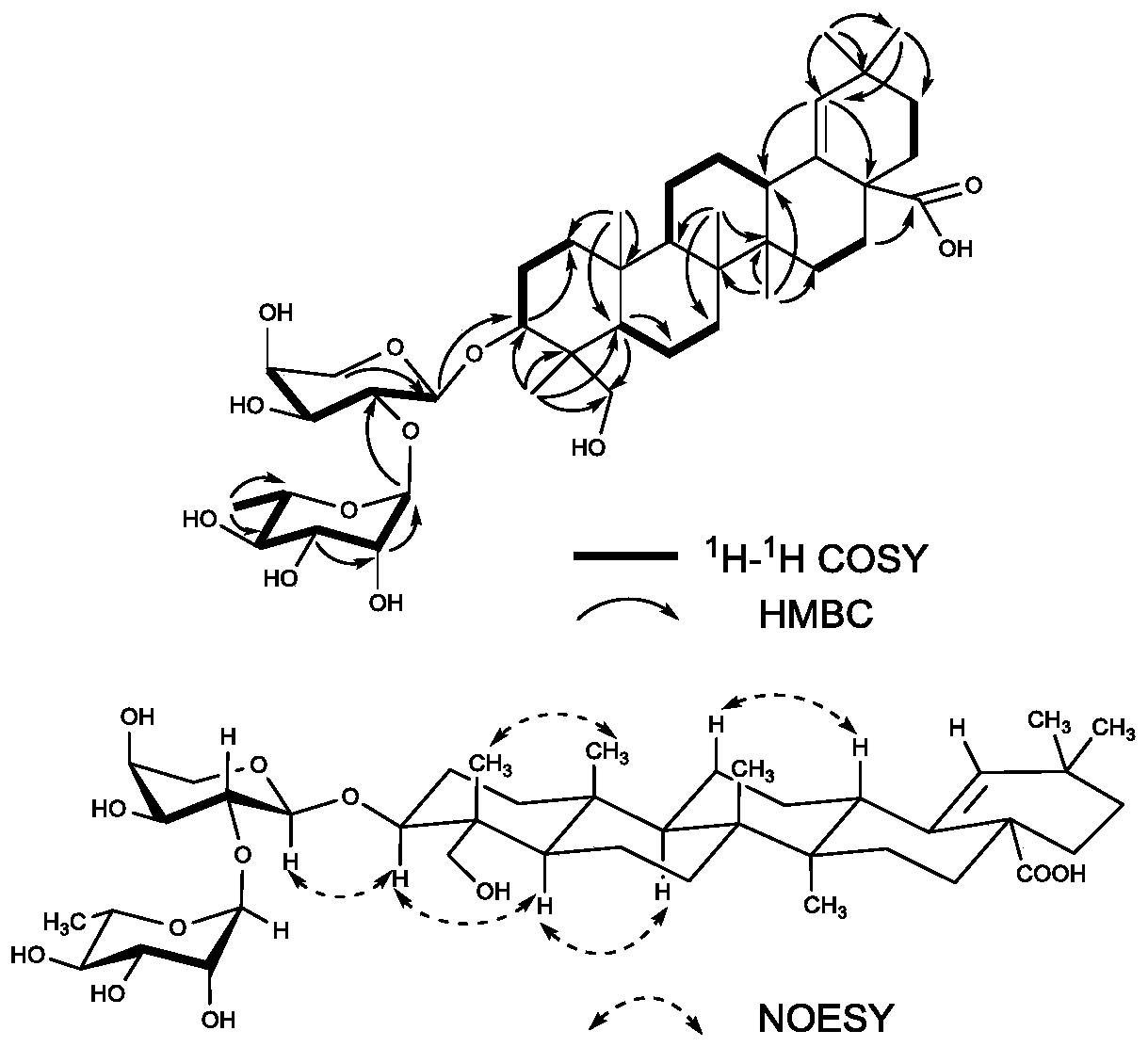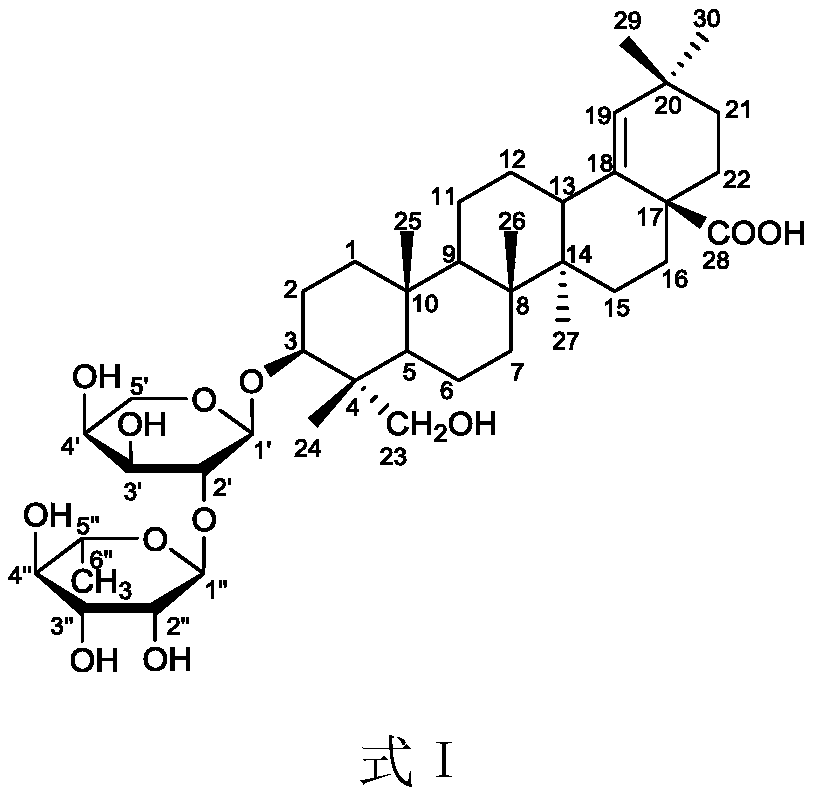Oleanane type triterpenoid saponin as well as extraction and separation method and application thereof
A technology of oleanane type, triterpenoid saponins, applied in the field of medicine, can solve the problem that the research on chemical components of rhizomes is rarely reported and the like
- Summary
- Abstract
- Description
- Claims
- Application Information
AI Technical Summary
Problems solved by technology
Method used
Image
Examples
Embodiment 1
[0033] Isolate and prepare the target compound (abbreviated NGTS) from Nigella glandularis, the method is as follows:
[0034] The raw material is Nigella nigularia collected from Urumqi, Xinjiang. Take 20 kilograms of the rhizome of Nigella glandularis, cut it into small sections with a guillotine, add 100 liters of 70% ethanol to carry out reflux extraction, each time for 2 hours, a total of Extract 3 times. The extracts were combined, and ethanol was recovered under reduced pressure to obtain 2.5 kg of extract. Disperse the extract in 10 liters of distilled water, extract 3 times with an equal volume of petroleum ether, discard the petroleum ether layer, then extract 3 times with an equal volume of water-saturated n-butanol, recover the n-butanol layer, and obtain 225 grams of total saponins. The total saponins were separated and purified with a silica gel chromatography column, and the mixed solvent gradient system of chloroform-methanol-water with a volume ratio of 20:1:...
Embodiment 2
[0036] Isolate and prepare the target compound (abbreviated NGTS) from Nigella glandularis, the method is as follows:
[0037] The raw material is Nigella nigularia collected from Urumqi, Xinjiang. Take 10 kg of the rhizome of Nigella glandularis, cut it into small sections with a guillotine, add 100 liters of 70% ethanol to carry out reflux extraction, each time for 1 hour, a total of Extract 3 times. The extracts were combined, and ethanol was recovered under reduced pressure to obtain 1.3 kg of extract. The extract was dispersed in 5 liters of distilled water, extracted three times with an equal volume of petroleum ether, discarded the petroleum ether layer, then extracted three times with an equal volume of water-saturated n-butanol, and recovered the n-butanol layer to obtain 116 grams of total saponins. The total saponins were separated and purified with a silica gel chromatography column, and the mixed solvent gradient system of chloroform-methanol-water with a volume ...
Embodiment 3
[0039] Isolate and prepare the target compound (abbreviated NGTS) from Nigella glandularis, the method is as follows:
[0040] The raw material is Nigella nigularia collected from Urumqi, Xinjiang. Take 30 kg of the rhizome of Nigella glandularis, cut it into small sections with a guillotine, add 100 liters of 70% ethanol for reflux extraction, each time for 2 hours, a total of Extract 3 times. The extracts were combined, and ethanol was recovered under reduced pressure to obtain 3.6 kg of extract. Disperse the extract in 10 liters of distilled water, extract 3 times with an equal volume of petroleum ether, discard the petroleum ether layer, then extract 3 times with an equal volume of water-saturated n-butanol, recover the n-butanol layer, and obtain 268 grams of total saponins. The total saponins were separated and purified with a silica gel chromatography column, and the mixed solvent gradient system of chloroform-methanol-water with a volume ratio of 20:1:0~6.5:3.5:1 was ...
PUM
 Login to View More
Login to View More Abstract
Description
Claims
Application Information
 Login to View More
Login to View More - R&D
- Intellectual Property
- Life Sciences
- Materials
- Tech Scout
- Unparalleled Data Quality
- Higher Quality Content
- 60% Fewer Hallucinations
Browse by: Latest US Patents, China's latest patents, Technical Efficacy Thesaurus, Application Domain, Technology Topic, Popular Technical Reports.
© 2025 PatSnap. All rights reserved.Legal|Privacy policy|Modern Slavery Act Transparency Statement|Sitemap|About US| Contact US: help@patsnap.com



